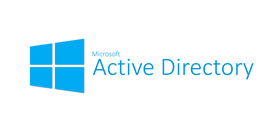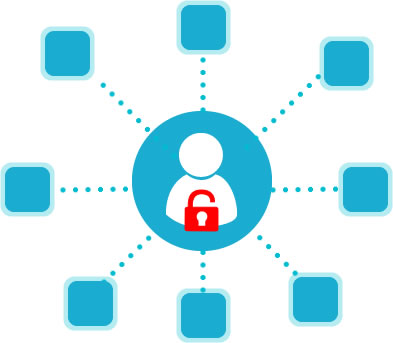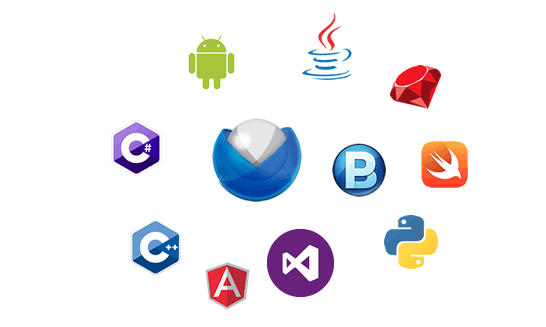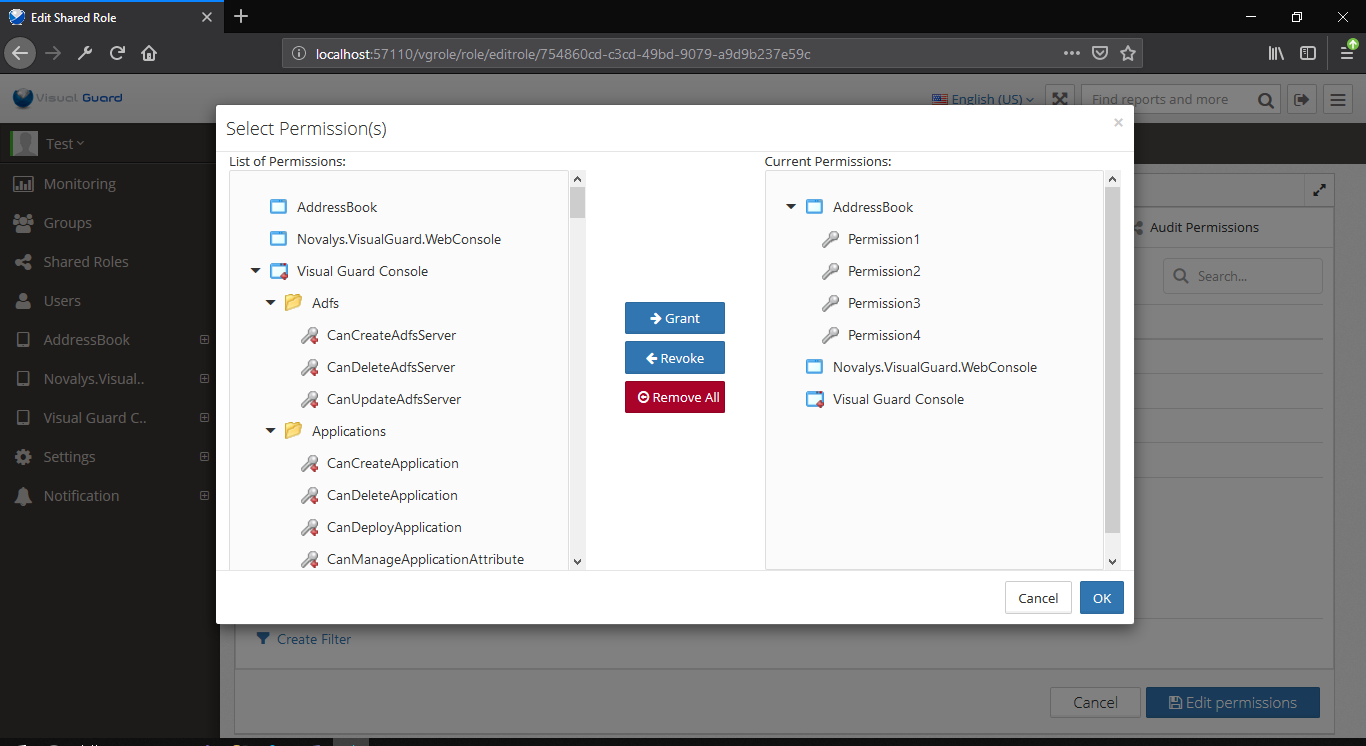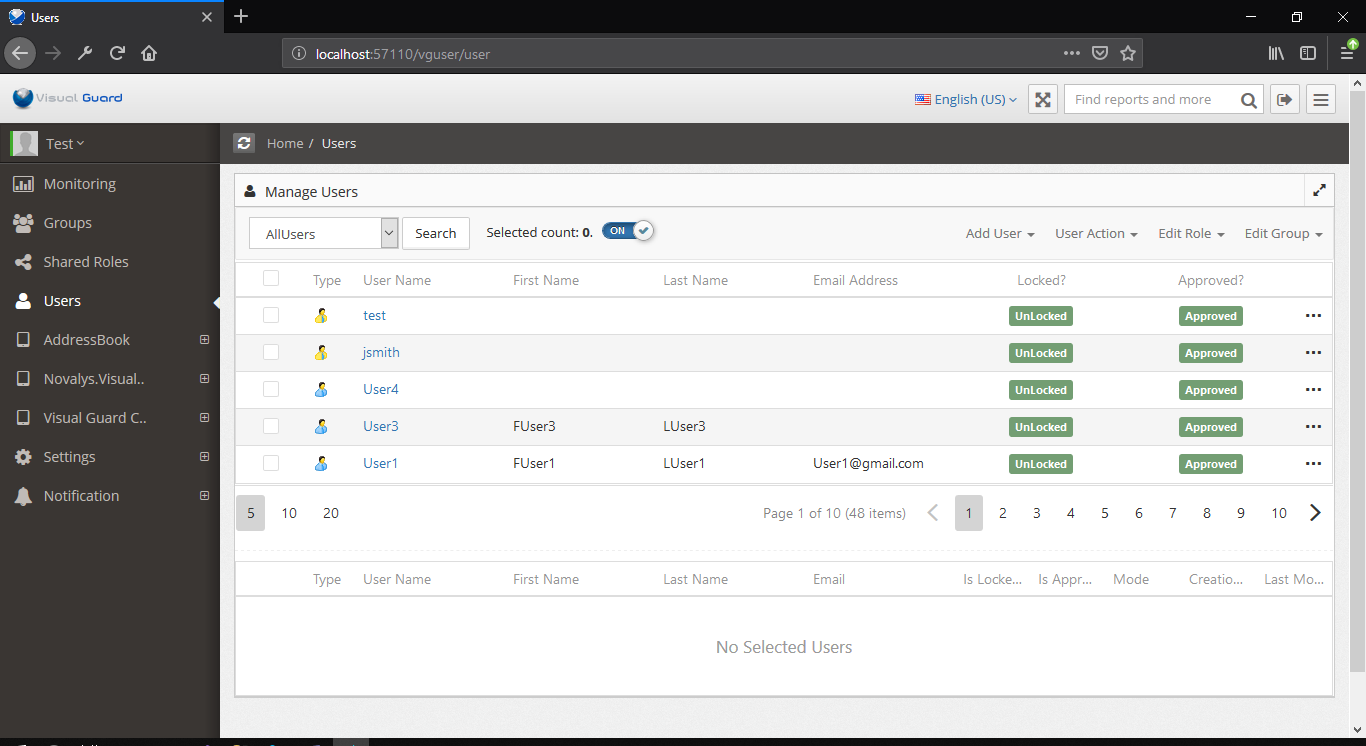Integrate PowerBuilder with Active Directory
Integrate with Active Directory - Implement Single Sign-On (SSO)
Centralize Security for several technologies - Comply with regulations (GDPR, SOX, HIPAA...)
Delegate Security Admin to Business Users
Try Visual Guard
Authenticate Users Against Active Directory
Thanks to Visual Guard you can manage a single user list in Active Directory and implement Single Sign-on (SSO) authentication in your PB applications.
The Identity Federation features also provided by Visual Guard allow independent entities to access the same system, while using Windows accounts to authenticate users. Each organization still manages their own Windows accounts, stored in Active Directory.
Integrate with Active Directory
Users will sign in to PowerBuilder applications with their Windows accounts
Implemente Single Sign-On (SSO)
Users don't have to enter their credentials.
They start the application, and get authenticated silently.
Grant Access Rights to Windows Users
Define which data they can access, which controls they can use etc.
Users Permissions are automatically enforced after authentication.
Grant Access Rights to Windows GROUPS
Grant Access Rights to Groups. Then place Users in Windows Groups. No need to manage permissions for individual Users
Easy implementation
Add a library to your application and call Visual Guard: it will take it from there. All the features are ready to use, including an Administration Console.
Same Security for all Technologies
A Single Central Security System for all applications: .NET, Java, PowerBuilder, Oracle, SharePoint, PHP....
Make your application Compliant
- Audit user permissions
- Protect personnal dataprocessed inside your applications
- Traceability: Monitor and Keep track of sensitive operations
- Detect data breaches and send alert notifications
Discover Visual Guard
In this video you will see how easy it is to integrate your PowerBuilder Applications with Active Directory and implement Single Sign On.
Going further you will discover all the possibility offered by Visual Guard to modernize your PowerBuilder Application security.
5 Steps to implement SSO in your PowerBuilder application
1 - Reference Visual Guard in the application
i.e. add 2 PBLs provided by Visual Guard to the application library list.
2 - Create the Security Manager
vge_n_cst_vgmanager uo_vgmanager uo_vgmanager = CREATE vge_n_cst_vgmanager
3 - Connect to the Access Control repository
uo_vgmanager.of_SetTransObject (…)
4 - Authenticate the user and load their security
uo_vgmanager.of_verifyuser (…)The same method applies to both Windows accounts and Username/Password accounts. This will authenticate the user and download his access privileges (if any).
5 - Apply User Access Privileges in the application (optional)
guo_vgmanager.of_setsecurity(…)
You may use this method if you defined restrictions for the user to access data and/or features in the application. One call in the ancestor window is enough to apply access privileges in the entire GUI.
Screenshots
Do not reinvent the wheel
Why spend months or years of complex developments, when you can easily implement a ready-to-use solution, embedding a complete feature set?
Read MoreWe keep up with security standards and technologies for you, and assist you down the road for designing, installing and configuring your system.
Read MoreVisual Guard Features
 |
User AuthenticationVerify user identities with various authentication methods |
Express |
Enterprise |
|---|---|---|---|
Login/password authenticationUsers must provide a valid login/password combination before accessing your application. |
|||
Windows AuthenticationUsers must provide valid Windows credentials before accessing your application. Optionally, you can let users enter the application without asking for their credentials (see below "Windows SSO"). |
|||
Strong / Multi-Factor Authentication (MFA)Highly secured, yet very simple for end-users: they provide their pin code or fingerprint, through an authorized device (mobile or web browser). It supports the most complex security requirements. Read more |
|||
Remote Windows AuthenticationUsers can log in your application with their Windows credentials, although they connect from a remote location (hotel, airport, public wifi, mobile Internet...). |
|||
Multiple Authentication ModeThe same application can accept several types of authentication. For instance Windows Accounts for internal users, login/password for external users, strong authentication for critical operations. Read more |
|||
Multiple Active Directories - Identity FederationReuse Windows accounts located in several Active Directories, no matter they belong to the same network or not. Security is centralized, although users are spread over multiple sites or companies. Read more |
|||
Windows SSO (Single Sign-On)Windows users can access your application without entering their credentials: Visual Guard automatically captures the current Windows account and applies the access rights granted to this account. |
|||
Web SSO (Single Sign-On)Users can log in once, and navigate across several websites without login again. No matter the websites are hosted in the same network or not. They just need to communicate with your VG server. Read more |
|||
Offline modeUsers can log in and access a desktop application although they are offline: Visual Guard works locally to authenticate users and enforce apply their permissions. Supports .NET WPF and Winforms applications. |
|||
Custom Password PolicyFor login/password accounts, you can customize the rules to define, renew, unlock, and expire a password. For Windows accounts, the current Active Directory password policy will appliesy. |
|||
 |
Traceability, Monitoring, and AuditKeep track and review important activities inside your applications |
Express |
Enterprise |
|---|---|---|---|
Log important application eventsRecord important events for traceability reasons: user logon, business operations, administrator operations, system security events... |
|||
Monitor applications in Real-timeFollow important activities in real time inside your applications such as: access to confidential data, critical transactions, security changes. Detect suspicious events - e.g., critical operations at unusual times. |
|||
Send email notifications for sensitive eventsAutomatically alert administrators, controllers or managers of important or suspicious activities. |
|||
Audit User OperationsReview in details the business operations performed in your applications (who did what, when, from where?). Filter them by application, user, dates, device or event. Pinpoint issues or suspicious events. |
|||
Analyze past activities with Historical GraphsAnalyze business trends with Graphs. Detect possible issues - for instance, unusual volumes of transactions. |
|||
Analyze application usage with attendance graphsSee how each application is used. Display the time and number of successful or invalid connections. |
|||
Audit Administrator OperationsReview administrator activities (create users, grant permissions...). Filter them by application, user, date, device or event. Pinpoint issues or suspicious events. |
|||
Generate Security ReportsGenerate reports about the access control configuration (users, groups, access rights, etc.). |
|||
 |
Security ToolsUser-friendly applications, dedicated to personnel managing and controlling security |
Express |
Enterprise |
|---|---|---|---|
Administration Console (Desktop)Ready-to-use, Windows-based application, designed for developers and master admins setting up the environment and managing application security. Learn more |
|||
Administration Console (Web)Ready-to-use web application, dedicated to administrators managing users and granting them access rights, as well as auditors controlling/reviewing application security. Learn more |
|||
Deployment ToolUtility deploying a security database from dev to test, and production environments. Learn more |
|||
Visual Guard ServerProduction server, exposing authentication, access control, and logging web services, and securing any applications capable of https or SOAP requests (Java, PHP, Delphi, C++, etc.). Read more |
|||
 |
Security FrameworkIntegrate Visual Guard and call its APIs, to manage security by Program |
Express |
Enterprise |
|---|---|---|---|
Call the Visual Guard APIsVG APIs expose hundreds of methods for securing the application in production (authenticating users, enforcing permissions, logging activities) and administering security (managing users, groups, roles...). |
|||
Secure multiple ApplicationsCentralize the security of all your applications. Get a global overview of all users and their access rights across the entire IT system. Comprehensive and uniform Control and Audit across all the applications. |
1 App | ||
Secure .Net ApplicationsAdd a VG .Net run-time in your applications to secure them. Supports Winform, WPF, ASP.NET, WCF, MVC, as well as SharePoint Applications. |
|||
Secure PowerBuilder ApplicationsAdd a VG PowerBuilder run-time in your PowerBuilder Applications to secure them. |
|||
Secure Java, PHP, AngularJS and other languagesCall the Web services exposed by the Visual Guard Server to Authenticate users, enforce permissions and log activities. Works with any language capable of calling Web Services. |
|||
Customize the Administration ConsoleGet the full source code of the Web Administration Console, and adapt it for your business needs. Implement your business logic and corporate presentation standards, and call the Visual Guard API to manage and audit security. Our support team will assist you every step of the way. |
|||
Support additional types of authentications and identitiesDevelop a module that will integrate with a 3rd party authentication provider. Our support team will guide you every step of the way. |
|||
Add custom security rulesImplement custom security rules for application security. For example, enforce segregation of duties by defining which roles or user group should be mutually exclusive (can't be granted to the same user). Our support team will guide you every step of the way. |
|||
Try Visual Guard Now
Visual Guard Dynamic Permissions
See how to define permissions without touching the code of your application.
Consulting - Assistance - Support
Novalys can help you put your application security in place. Our team offers the following services.
Functional and technical specifications
Analysis of existing applications, Interviewing users on security management rules, Definition and attribution of permissions and user roles, Definition and repartition of administration privileges, Proposition of global or local organization of application security.
Development
Integration of Visual Guard in your applications, Securing complex objects (Web services, classes…), Development of specific components or adaptation of Visual Guard components to respond to complex functional or technical specifications.
Production
Installation and configuration of VG with ADFS, Installation and configuration of Web SSO with Visual Guard, Creation of a deployment procedure for security in production.
Support
Benefit from a consistent and seamless experience from implementation to production thanks to the Visual Guard Professional Support Team.

Pre-sales and post-sales can be two very different things... I had a very uniform experience thanks to Anne
The support provided by Novalys has been excellent and very quick
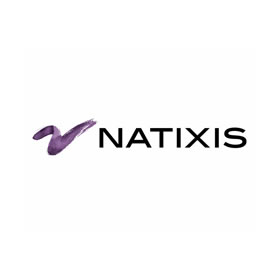



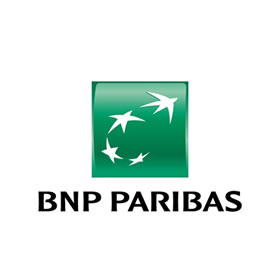



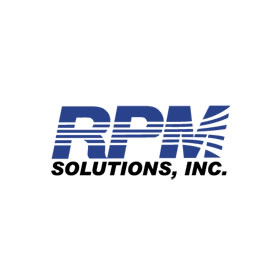











Feedback from our clients




